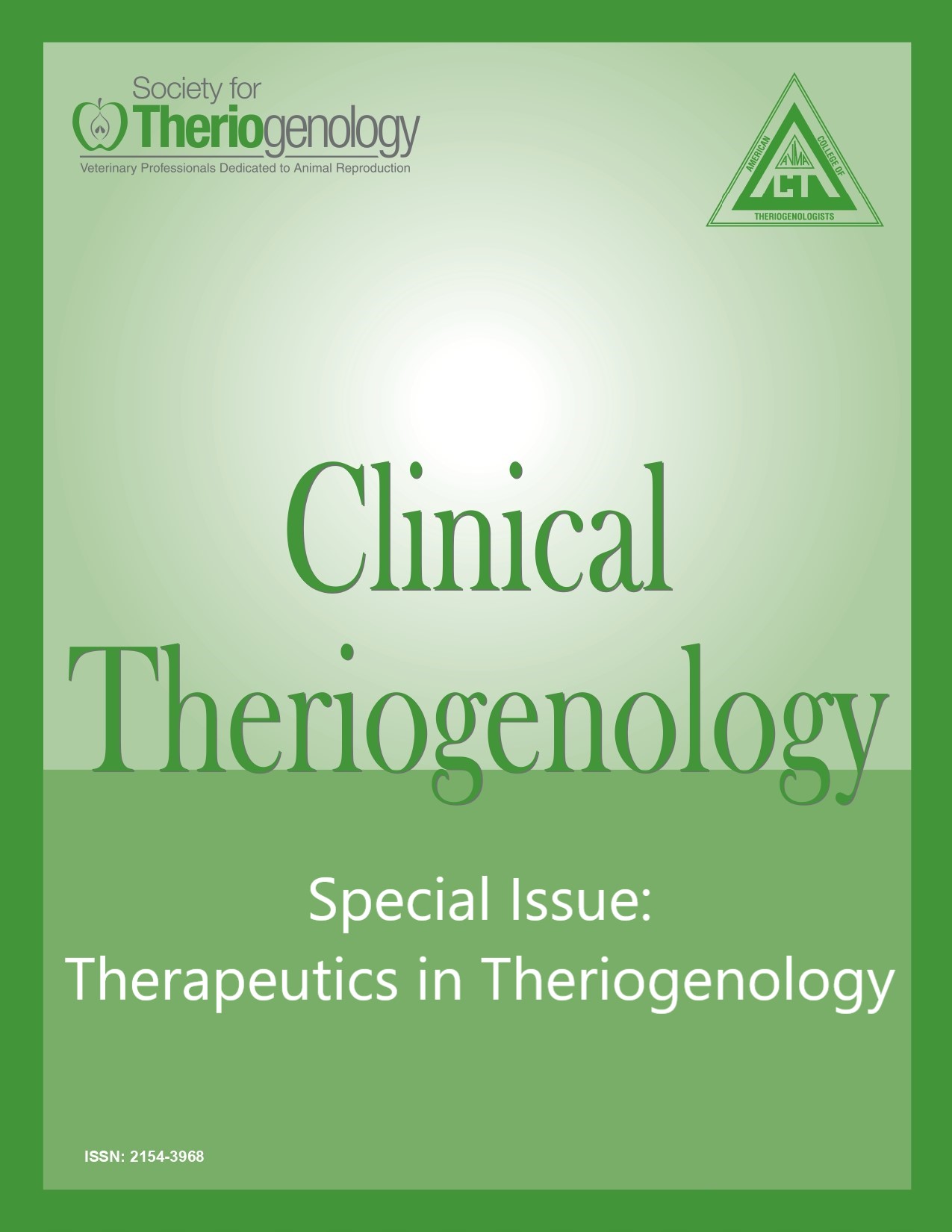Manipulation of ovarian function in sheep and goats
Abstract
Sheep and goats are short-day breeders. Melatonin, photoperiod, breed, nutrition, and geographical location influence seasonality. Estrus synchronization is useful in maximizing the profitability of small ruminant production. This article discusses the endocrine control of seasonality and the reproductive cycle, and manipulation of ovarian function in sheep and goats. The ovarian follicular wave pattern in these species is described to help the reader understand the mechanisms involved in the protocols for estrus synchronization and superovulation in small ruminants. The estrus synchronization protocol in these species encompasses using the male effect, photoperiod manipulation, and hormonal treatments. The male effect is an efficient synchronization technique during the transition period. Although not used routinely, photoperiod manipulation of seasonality is possible. Hormonal control of the cycle can be grouped into 2 categories; protocols used during the breeding season and protocols used for out-of-season breeding. During the breeding season, prostaglandin F2α can be used for estrus synchronization but this protocol is not very efficient for timed artificial breeding. Progestogen-based protocols are commonly used for estrus synchronization, for both in- and out-of-season breeding. Such protocols are often combined with the use of equine chorionic gonadotropin (eCG) to improve synchrony and ovulation rate. Melatonin implants are used to induce cyclicity for out-of-season breeding and can be combined with progestogen synchronization protocols. Synchronization protocols in combination with the use of follicle stimulating hormone or eCG allow superovulation for the purpose of embryo production. The most common synchronization and superovulation protocols are described. The availability of hormones varies among countries.
Downloads
References
title=CIDR%20dispensers%20for%20oestrus%20and%20ovulation%20control%20in%20sheep&
publication_year=1984&author=R.A.S.%20Welch&author=W.D.%20Andrews
&author=D.R.%20Barnes&author=K.%20Bremner&author=T.G.%20Harvey [cited 3 April 2024].

This work is licensed under a Creative Commons Attribution-NonCommercial 4.0 International License.
Authors retain copyright of their work, with first publication rights granted to Clinical Theriogenology. Read more about copyright and licensing here.





